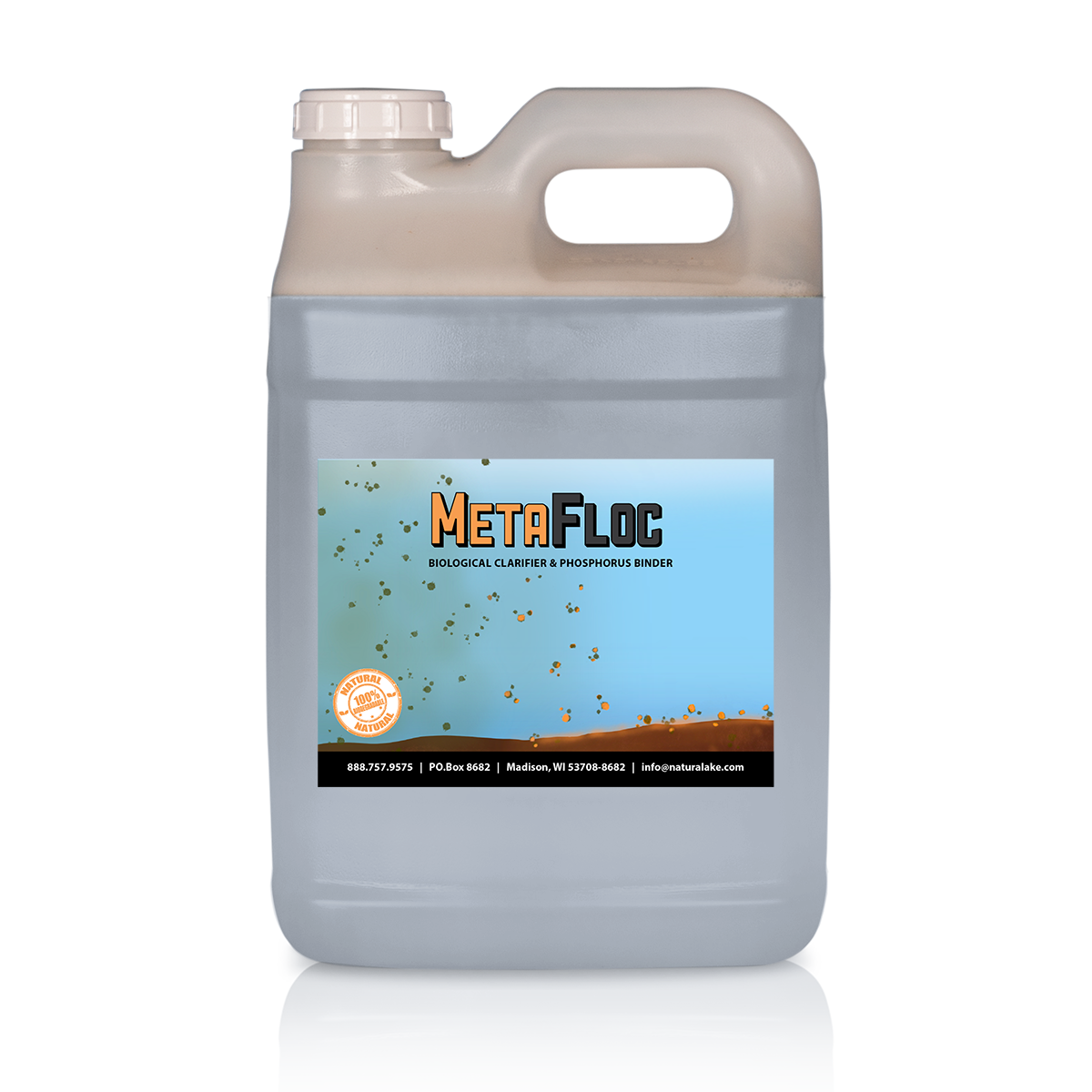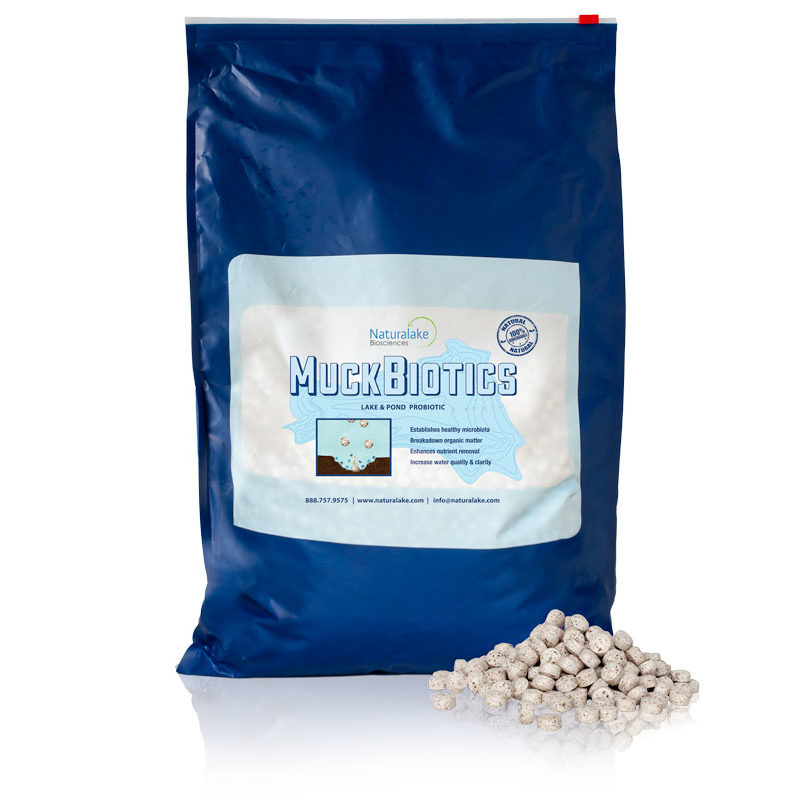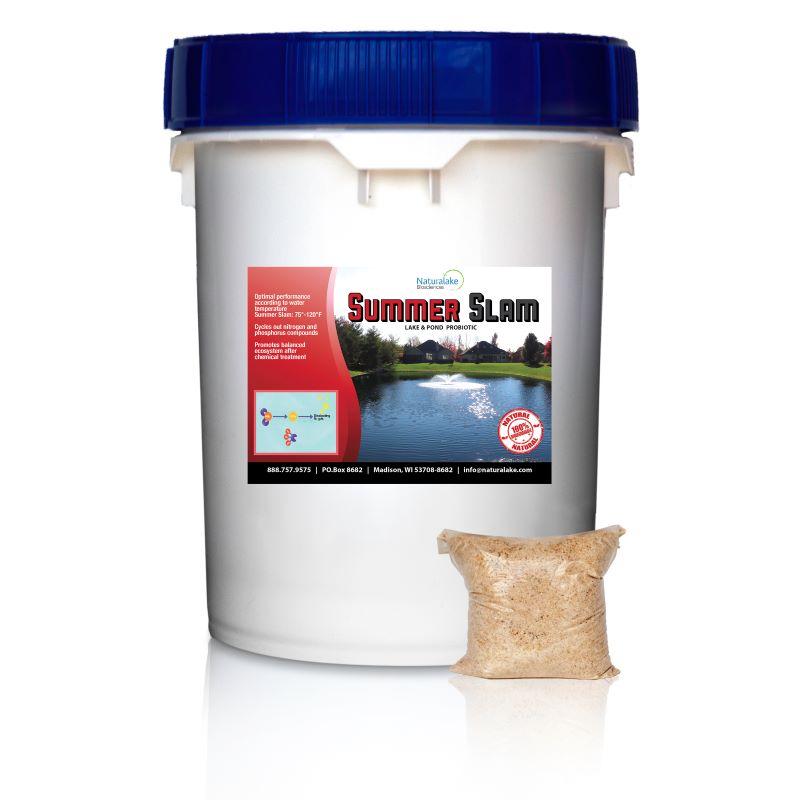
Changing the Nutrient Management Game For Aquatic Professionals
by Landon Wiet, Vice President
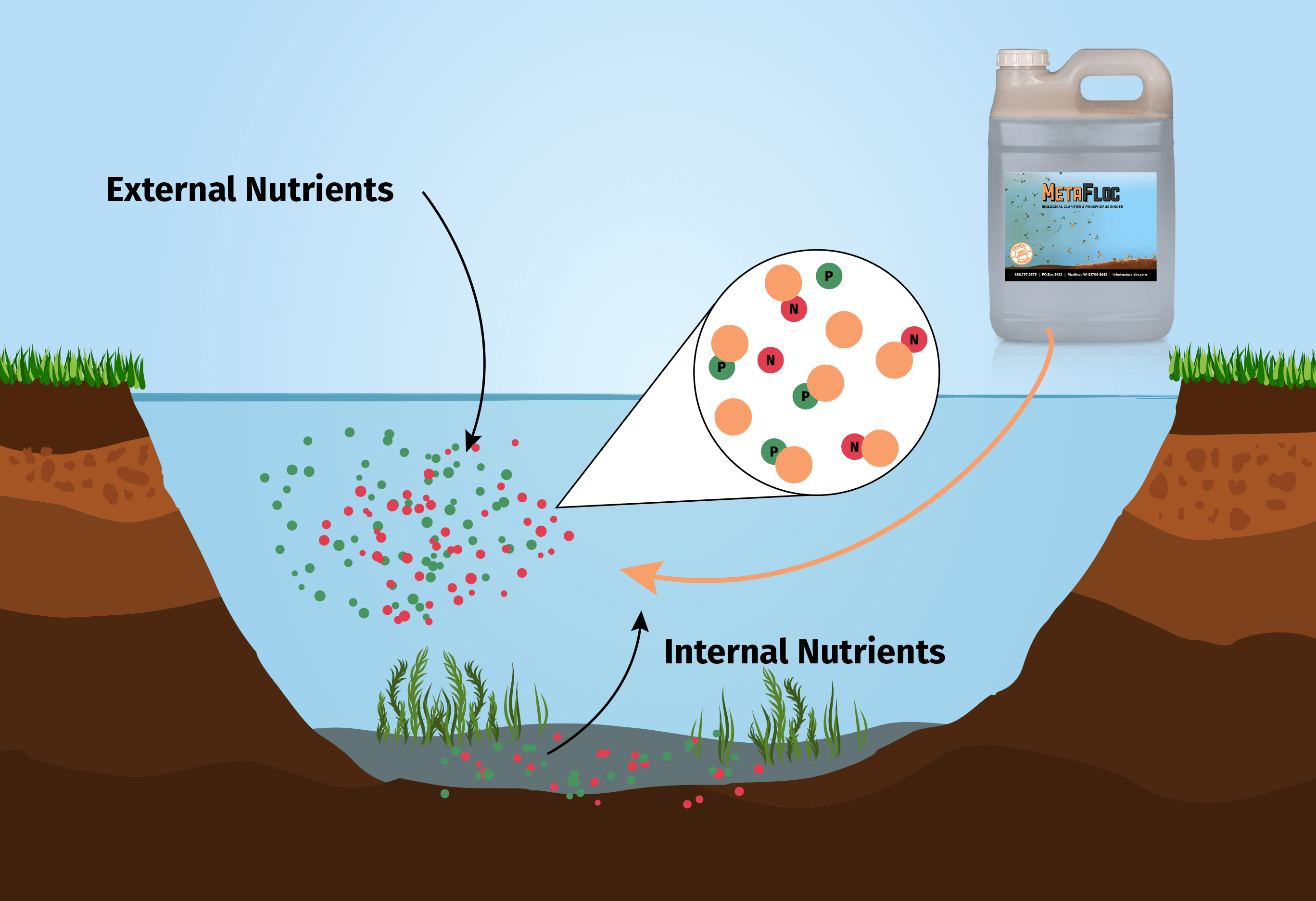
MetaFloc being utilized to treat external and internal sources of nitrogen and phosphorus
Major challenges to nutrient management
- Identifying all nutrient loads from external and internal sources to a lake is difficult.
- Nutrient fluxes are constantly changing based on complex environmental factors.
- Nutrient removal techniques are costly and can be limited in scope.
For aquatic professionals, nutrient management in lakes and ponds is often the biggest concern and greatest challenge. Nutrients such as phosphorus and nitrogen are essential for the survival and growth of plants and animals found in lakes and ponds. These nutrients enter aquatic ecosystems in various ways, including agricultural and urban runoff, atmospheric deposition, animal waste, and deposited organic matter. Although essential, too many nutrients in a lake or pond create an ecological imbalance. This imbalance can cause severe negative impacts on water quality and lead to harmful algal blooms, fish kills, limited biodiversity, or a reduction in habitat for aquatic life.
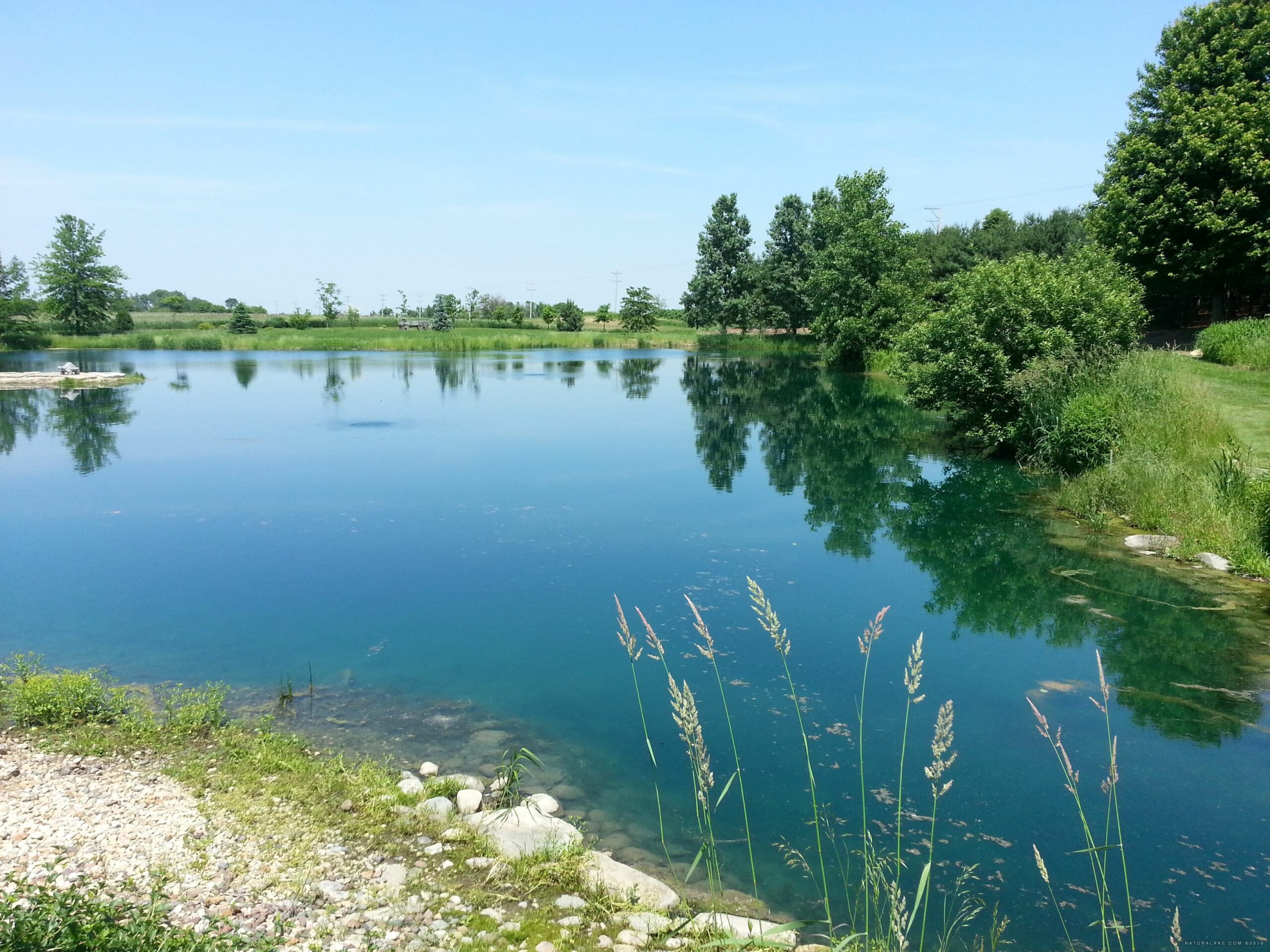
Managing these nutrients in lakes and ponds can be very challenging. Identifying all nutrient loads from external and internal sources to a lake is difficult. Nutrient fluxes are constantly changing based on complex environmental factors, and treatment techniques are costly and can be limited in scope. Despite these challenges, nutrient management offers a long-term solution that works with the natural ecosystem. Cheap “band-aid” approaches like copper sulfate, which kills algae and degrades the lake’s natural ecosystem, ultimately leading to more imbalances long-term.
Ideally, both phosphorus and nitrogen need to be managed. Phosphorus tends to tell us how severe a harmful algae bloom (HAB) can be (number of algae and toxins present), while nitrogen tends to tell us the type of species present (toxic vs. non-toxic). Multiple strategies are often required to achieve and maintain desired results. Strategies like probiotics, oxygenation, and shoreline restoration have proven effective overall (Link to case study). However, techniques that emphasize targeting the phosphorus portion of the nutrient load are often most successful in the long term.
Phosphorus is particularly challenging for aquatic professionals because of the limitations in phosphorus-specific management tools. Traditional products like aluminum sulfate have known toxicity issues, varying dose rates and typically require labor-intensive testing and application methods to be utilized correctly. Even more recent products available to the market, like Phoslock® and others, are expensive, have confusing dose rates, only work on a specific form of phosphorus, and are difficult to apply even for the seasoned aquatic professional. Because of these challenges, it is estimated that only 40% of aquatic management companies have adopted a phosphorus-specific tool into their nutrient management program.
Changing the Nutrient Management Game for Aquatic Professionals
The Natural Lake Biosciences laboratory understood the challenges aquatic professionals face in nutrient management and dedicated years to researching and developing a solution. Natural Lake Biosciences then introduced Metafloc, the world’s first biological clarifier and phosphorus binder.
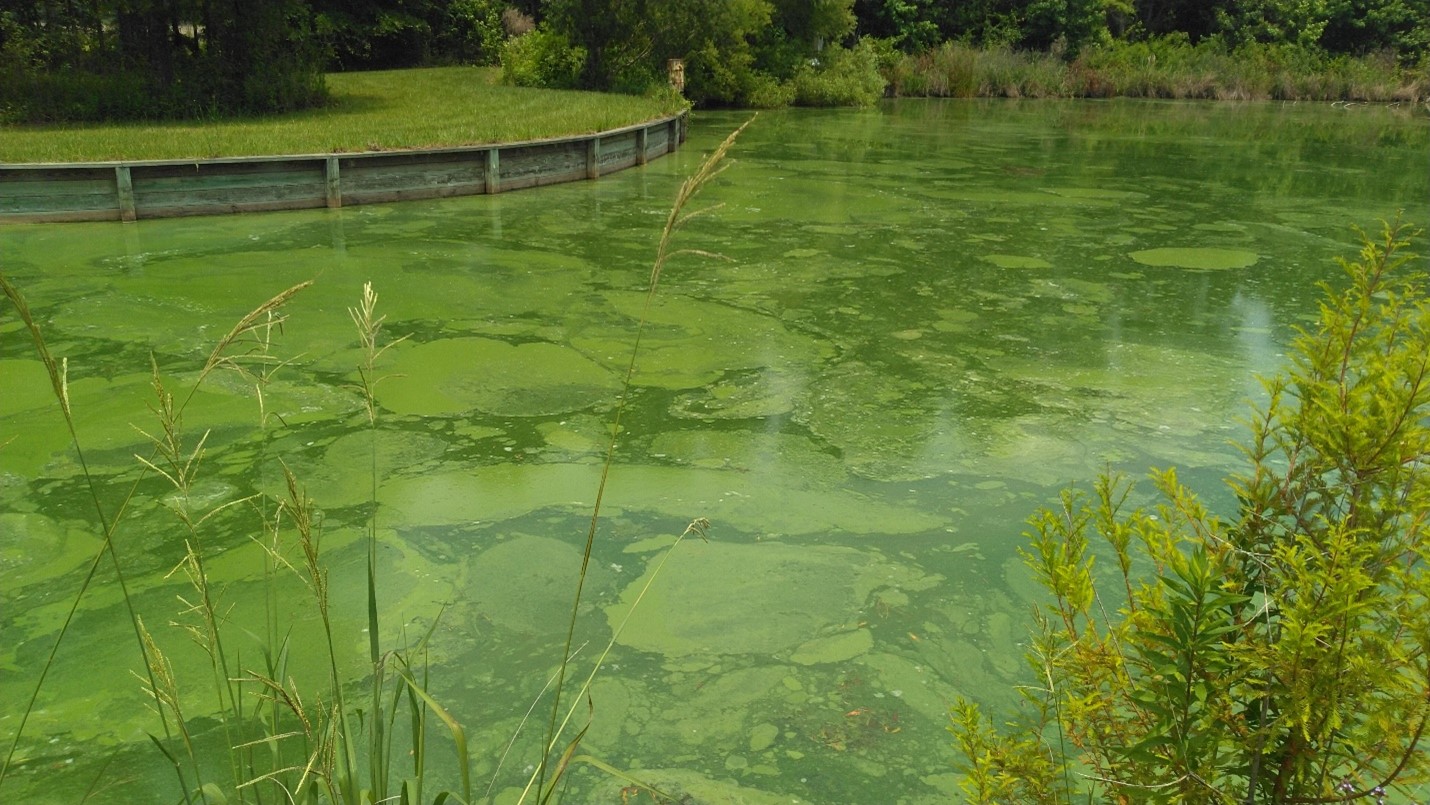
Before
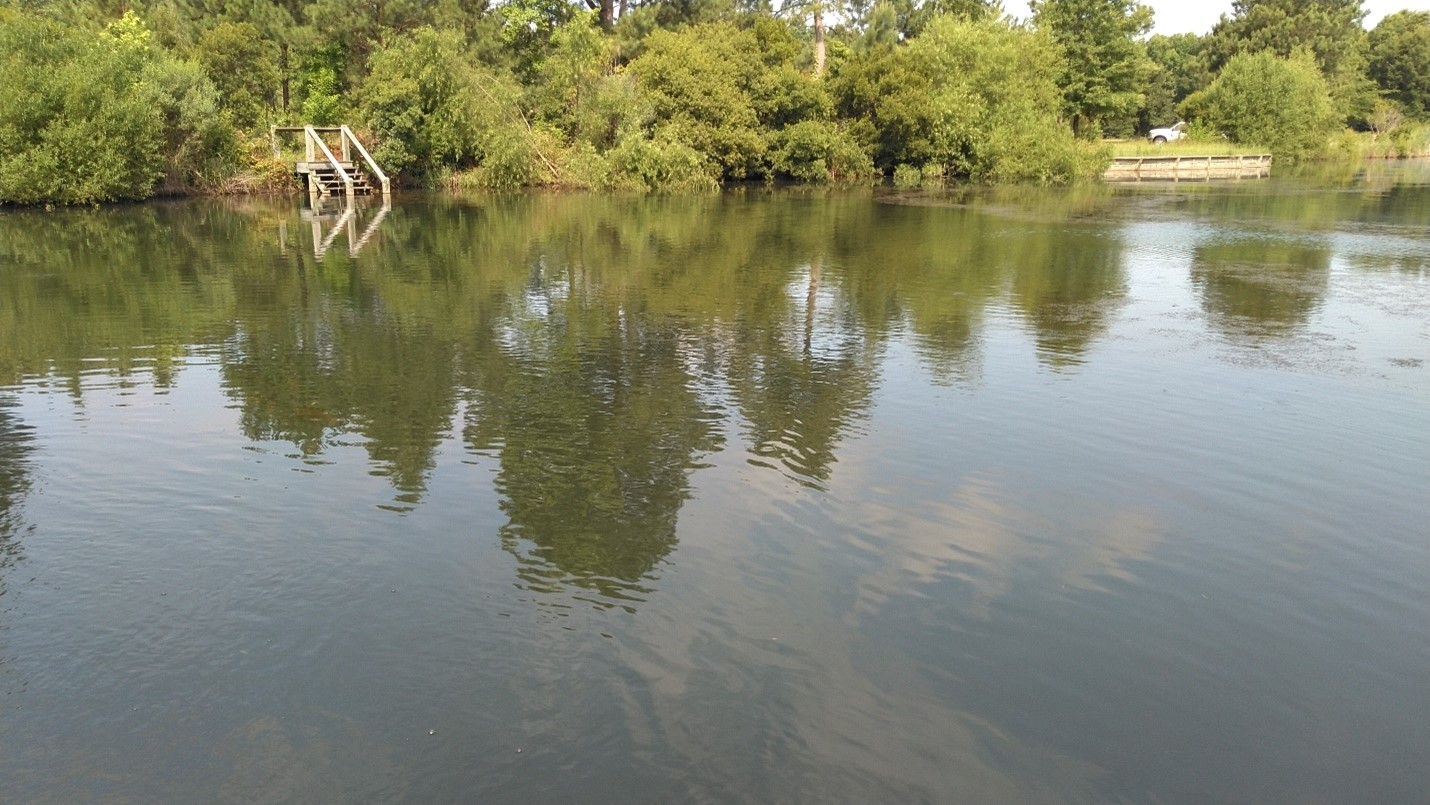
After
Tip of the day:
Over 50% of all nutrients entering a lake are in particulate form, unusable by algae. These nutrients deposit on the bottom.
About the Author
Landon earned a Bachelor of Science degree from the University of Wisconsin – Madison. He joined the Aquafix team in 2011 and currently leads the Natural Lake Biosciences division. Landon serves on the Board of Directors for the Midwest Aquatic Plant Management Society and is a contributing member of many professional aquatic organizations. He is passionate about using his industry experience and expertise to promote sustainable and effective biological technologies for managing aquatic resources.


